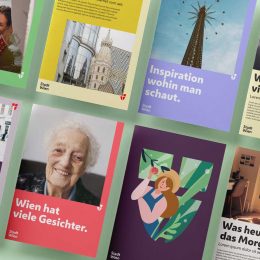
Disruptive Branding and the Power of Design with Jacob Benbunan
This week’s interview is with Jacob Benbunan, co-author of the book “Disruptive Branding” and founder and CEO of independent global consultancy Saffron, an agency specializing in brand, experience and innovation strategy and design. He founded the company in 2001 together with late mentor and friend, Wally Olins, who passed away in 2014 and is widely regarded as the man who invented brand strategy. In recent years, Benbunan has spearheaded the expansion of Saffron from two offices – one in Madrid, one in London – to its current global footprint, with offices in five cities, spanning the globe. Jacob is also a Professor in the Master of Strategic Design of Spaces at IE School of Architecture and Design in Madrid.
Prior to the birth of Saffron, Jacob worked for nine years at Wolff Olins, where he was part of the team that created the iconic brand Orange. Jacob has worked for almost 30 years in branding and advertising, and in that time has built an impressive portfolio comprising several high-profile clients and projects, including the creation of Vueling, Akzo Nobel, A1 Telekom Austria, the rebrand of Bankinter and Swiss Re, etc.
Having originally studied to be an engineer at Boston University, Jacob is also fluent in English, French and Spanish. When he’s not keeping the lights on at Saffron, he’s often commenting for the media on issues relating to brand and identity. We took some time to sit down with Jacob and learn about the process of branding, the inner workings of his consultancy, Saffron, and his ideas about the power of design.
Could you tell us a little about your background and what made you decide to found Saffron Brand Consultants? Was there a particular moment that sealed the decision for you?
I founded Saffron, our consultancy specializing in brand building and brand management, with Wally Olins about 18 years ago. Prior to that, I worked for his company, Wolff Olins, for about nine years, where I was in charge of our Spanish- and French-speaking clients. I was also a member of the board. And prior to that, I worked for six years in a strategy consultancy. I was educated in the U.S. and did my undergraduate and graduate degrees in engineering.
These days, I run Saffron and teach at IE School of Architecture and Design, where I’m also a member of the advisory committee. I’ve also just written a book on disruptive branding, and frequently write articles on the topic, too.
Founding Saffron actually coincided with the sale of Wolff Olins to Omnicom. When it was sold, some of us didn’t want to work for a network, so we thought, how about launching something ourselves? I was 40 at the time. My wife and I spent a weekend at Wally’s place in the British countryside, near Oxford. I shared my ideas with him that weekend and he said, “Jacob, if you want to start this, I will support you. I’ll invest in the business, and I’ll work with you.” In the beginning, he had said he only really wanted to work two days or so a week, and in the end, he was working seven, with me. So that’s how Saffron was born.
How did you become involved in branding, with a background in engineering?
I studied engineering; I don’t really know why. Maybe in part because I went to a French high school. I was educated in the French system and, at that time, the prevailing idea we grew up with was that if you wanted to be successful, you had to become an engineer. And, if I’m honest, I went for it because of that, and not really because I felt it was my vocation to be an engineer. My true love back then was actually architecture. But at the time, it just seemed to be the done thing to go off and become an engineer.
When I finished my master’s degree, I worked for about four months with Hewlett Packard, in the industrial management unit, but, honestly, I didn’t really like it. The job was exactly the sort of thing I’d studied in my master’s degree, but I found I just didn’t enjoy it. So I left and joined a strategy consultancy, and discovered that I enjoyed that very much. I worked there from ’86 to ’91, but I eventually became frustrated by the lack of space in the job for me to put my artistic skills and interest in architectural design to use. Then, out of the blue, I got a call from a headhunter in London on behalf of a company called Wolff Olins, who spoke to me about corporate identity and brands. And it’s funny to think now, but at that time, I had never even heard of corporate identity. I knew about brands because I bought brands, but that was about it. I’d certainly never heard of Wolff Olins. But I liked the sound of what this guy on the phone was saying. So, after a long interview process of about six months, I joined the company and took my first steps into the branding world. And I’ve been here ever since – so around 28 years now.
What are the typical backgrounds of the people working at Saffron? Do you think it’s possible to study branding?
Yes and no. I mean, there are now master’s degrees in branding, so technically, I suppose you can – but I don’t think that alone is enough. Yes, you can teach students about what brands are, about how to build a brand, or you can write a book about it – in fact, two of my colleagues and I have actually just done exactly that. But I don’t think you can become a respectful brand practitioner and advisor until you’ve really practiced it. I think it’s the same in lots of fields; yes, you can study architecture, advertising, marketing, but you need real, practical experience, too, in order to become really good at what you do.
I like to have a whole range of disciplines within our company: we have architects, psychologists, historians, media specialists. Yes, we have a couple of people with advertising backgrounds too, although that’s not what their roles at Saffron are necessarily about. And, of course, we have a lot of people who studied design. Design, because it’s such an integral part of branding, and I think to be really skilled and competent in that arena, you have to be a real professional who’s studied it, not just in a practical sense but also – crucially – from a strategic point of view.
I like to have a whole range of disciplines within our company: we have architects, psychologists, historians, media specialists.
Of the 75 people that make up Saffron, maybe two have an MBA. To me, a person who’s successful here is a person who is well-read, and who has a sound grasp of what’s going on in the world at the moment, and an interest in things like history, psychology, sociology, consumer behavior semiotics, and, of course, business. Because at the end of the day, you work for businesses. So, ideally, you also have to be the kind of person who’s at ease speaking with company leaders and high-ranking professionals.
But really, there’s no set path one must take in order to end up in the world of brands and to work somewhere like Saffron. It’s more of a combination of different strengths and strands of experience that lead you here.
You recently published a book called “Disruptive Branding”. Could you tell us more about this idea, a concept that you are also practicing with Saffron? How does disruptive branding work and how can designers implement it?
One of the reasons we called the book “Disruptive Branding” was because the publisher thought it was a catchy title, and I don’t disagree with that. It certainly grabs your attention – because anything to do with disruption usually sells very well.
But aside from the catchiness of the phrase, the fact of the matter is that disruption has been with us for millennia. The guy who came up with the idea of the wheel, did he disrupt the world? Can you imagine the world before the wheel? Or the guy that invented the steam engine, which took us to the industrial revolution? Or Edison, with his groundbreaking work in electricity? Yes, I think we can safely say these things caused huge disruption.

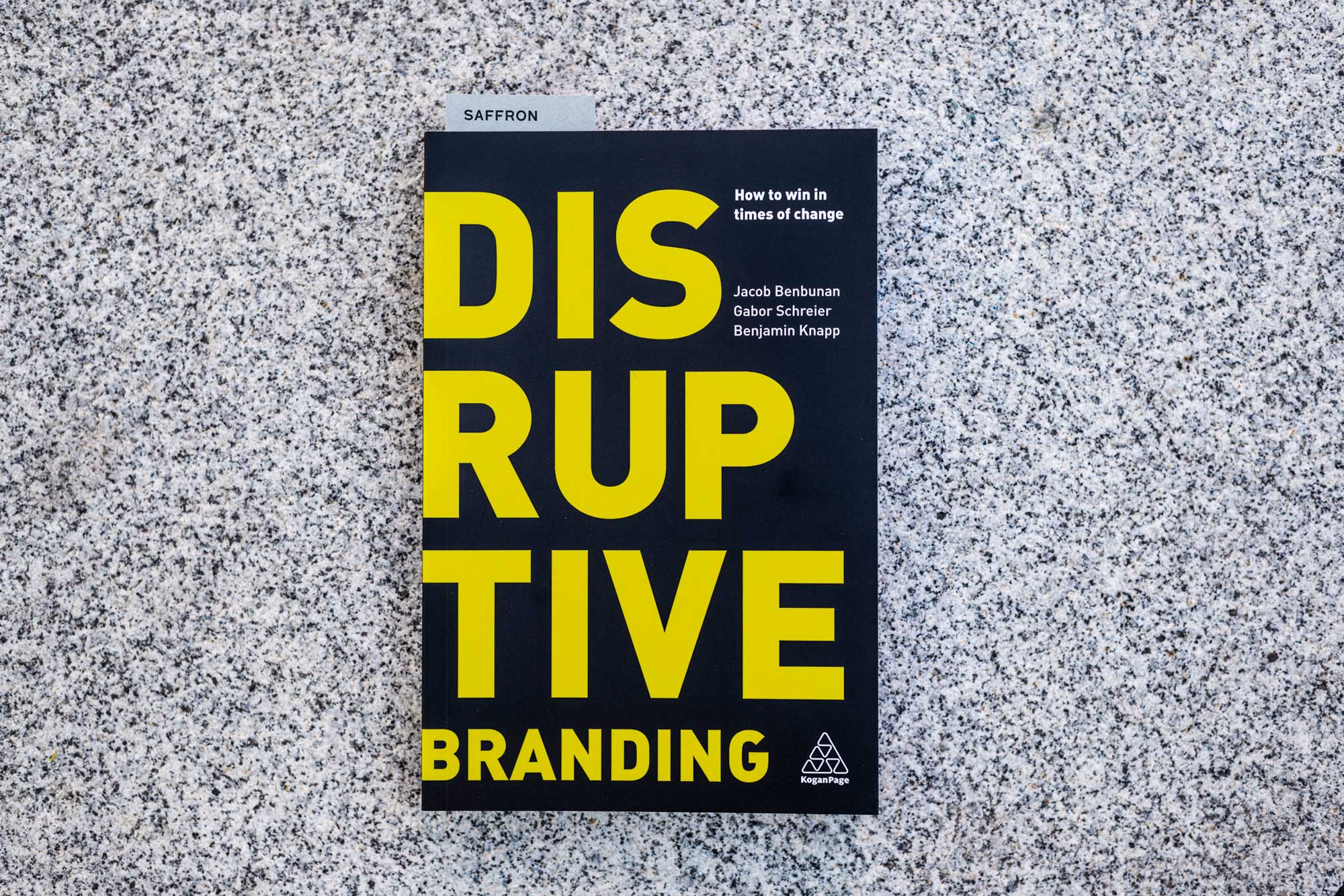
And then, of course, you have the more recent stuff. Steve Jobs disrupted our lives with the iPhone, Bill Gates with Microsoft – the list goes on. There are so many examples. One could say that Freud disrupted the way we look at the human psyche, and that Einstein disrupted the way we look at nature. Disruption has been with us forever.
And now, technology and software engineering, and everything that comes with it, has given us limitless potential to develop our ideas, and to make our ideas come to life in a way that has caused huge disruption – disruption to the conventional way of doing things.
This is why, for example, old power companies have been disrupted by new power companies – in fact, even the “new” power companies are now being disrupted by even newer power companies. AirBnb has been a major disruption to the hotel industry. Or look at Apple: the invention of iTunes totally disrupted the way we listen to music and the music industry, but then along came Spotify. And there’ll undoubtedly be another new kid on the block in no time, disrupting things even further on that front.
I see disruption as a metaphor for creativity. It’s saying to yourself: the status quo in this particular industry is this – how do I use my creativity and lateral thinking to shake things up?
The concept of disruption is very attractive and seductive. Because if you’re able to combine IQ and EQ, that is, able to combine creativity with thorough, strategic thinking, you have the potential to cause real disruption. I see disruption as a metaphor for creativity. It’s saying to yourself: the status quo in this particular industry is this – how do I use my creativity and lateral thinking to shake things up?
And if you succeed, you disrupt. If you’re comfortable in the creative world, you should be very comfortable in the world of disruption. From day one, we at Saffron were seen as a brand consultancy that was disruptive. A client once described us as the perfect balance between charm and brutality. Not that we treat our clients with brutality, of course! But that we see disruption as a positive and are committed to achieving it.
If you’re comfortable in the creative world, you should be very comfortable in the world of disruption.
We’ve worked with several clients who’ve found themselves at a point where they really felt they had to transform, because they’d been seriously disrupted by the competition. They come to us to take them through that process. So we’re very much at ease with the idea of disruption, and it very much aligns with how we see our business. That’s why we’re in this industry.
Design-oriented thinking and the process of designing has been picked up and imitated by large global companies in recent years. Big consulting firms are now constantly on the lookout for design agencies. How do you see the power of design in the business world?
Design is a fundamental tool in our world, because it helps make the promise of a brand tangible. Good design makes strategy incredibly efficient. Good design even makes strategy invisible; you don’t even notice the strategy behind it, you just enjoy the beauty of design.
Real buzzwords in our industry at the moment are UX, user experience, and UI, user interface. Take the chairs we’re both sitting on right now: they’re the result of extremely in-depth ergonomics analysis. And the goal of that analysis, ultimately, is user experience – in this case, our experience of sitting on these chairs. This is something we’ve understood since long before the digital age: user experience is fundamental. And this is where design is crucial.
the reality is that, most of the time, your experience with brands is not only digital. It’s both digital and physical. The brand itself doesn’t change between the two mediums, what changes is the way you experience the brand. And the user experience, be it digital or physical, has to be aligned with the promise of that brand. And this is where design, again, plays a fundamental role.
We’re all familiar with super successful industrial designers and architects, not just because of the beauty of what they did, but the function and form and all that stuff. When we talk about brands, we talk about the promise of an experience, which encompasses both UX and UI. For the first 10 years or so after the millennium, there was a huge focus in branding on digital experience – user experience in the digital world. But the reality is that, most of the time, your experience with brands is not only digital. It’s both digital and physical. The brand itself doesn’t change between the two mediums, what changes is the way you experience the brand. And the user experience, be it digital or physical, has to be aligned with the promise of that brand. And this is where design, again, plays a fundamental role.
Design, originally, in the world of branding, was circumscribed to the very limited realm of logos and colors and typography. Typography is, of course, an important tool that designers and branders need to utilize well. Good typography should be both aesthetically appealing and functional; there’s nothing worse than typography that looks beautiful, but that just doesn’t work because it’s in impossible-to-read colors, shapes etc.
In any case, it goes without saying that a good brand requires a good design system behind it, a system that goes beyond just the logo and colors. It has to include the photography style, the iconography style, typography, too. It has to include the way you design every one of the interfaces. It involves a thorough analysis of every one of the touch points that your brand has with its different audiences.
…a good brand requires a good design system behind it, a system that goes beyond just the logo and colors.
And these touch points may be both physical and digital. This is why design plays a fundamental role in the world of building the experience. Architecture is important, too, because a lot of the time, when we’re not experiencing the brand on a digital platform, it’s in a real, physical space. That space sends a message, and that message has to be aligned with the brand and its promise. If it isn’t, then there’s a big clash for the consumer between the promise of the brand and what they actually experience, and that’s problematic.
At IE School of Architecture and Design, we teach a course called ‘Brand as a space”, which I think is very important. You can tell a lot from a space about the brand behind it. That brand could even be you in your home, me and my wife and family in our home, it could be my office, it could be anything.
So it’s in these environments that all the different elements of design come into play. And the beauty of what we do is that we, much like the conductors of orchestras, bring all of this together. We spend our time orchestrating different elements to create something that really works.
Which have been your favorite projects you’ve worked on with Saffron in recent years?
There have been a few really interesting ones. I hugely enjoyed the work we did for an oil and petrol company here in Spain called Cepsa, which is almost 100 years old. They’d had a change of ownership and we helped them with a complete brand overhaul, as well as with the practical side of manifesting their brand. We designed not only the digital user interface, when you can use your phone to pay for the petrol, but also the new petrol stations themselves.
The whole concept behind the project was about a combination of engineering innovation with a real focus on adaptability to the needs of the customer, which we coined “adaptable engineering”. We really wanted everyone who walks into that petrol station to say, “Wow, this really isn’t a conventional petrol station.”
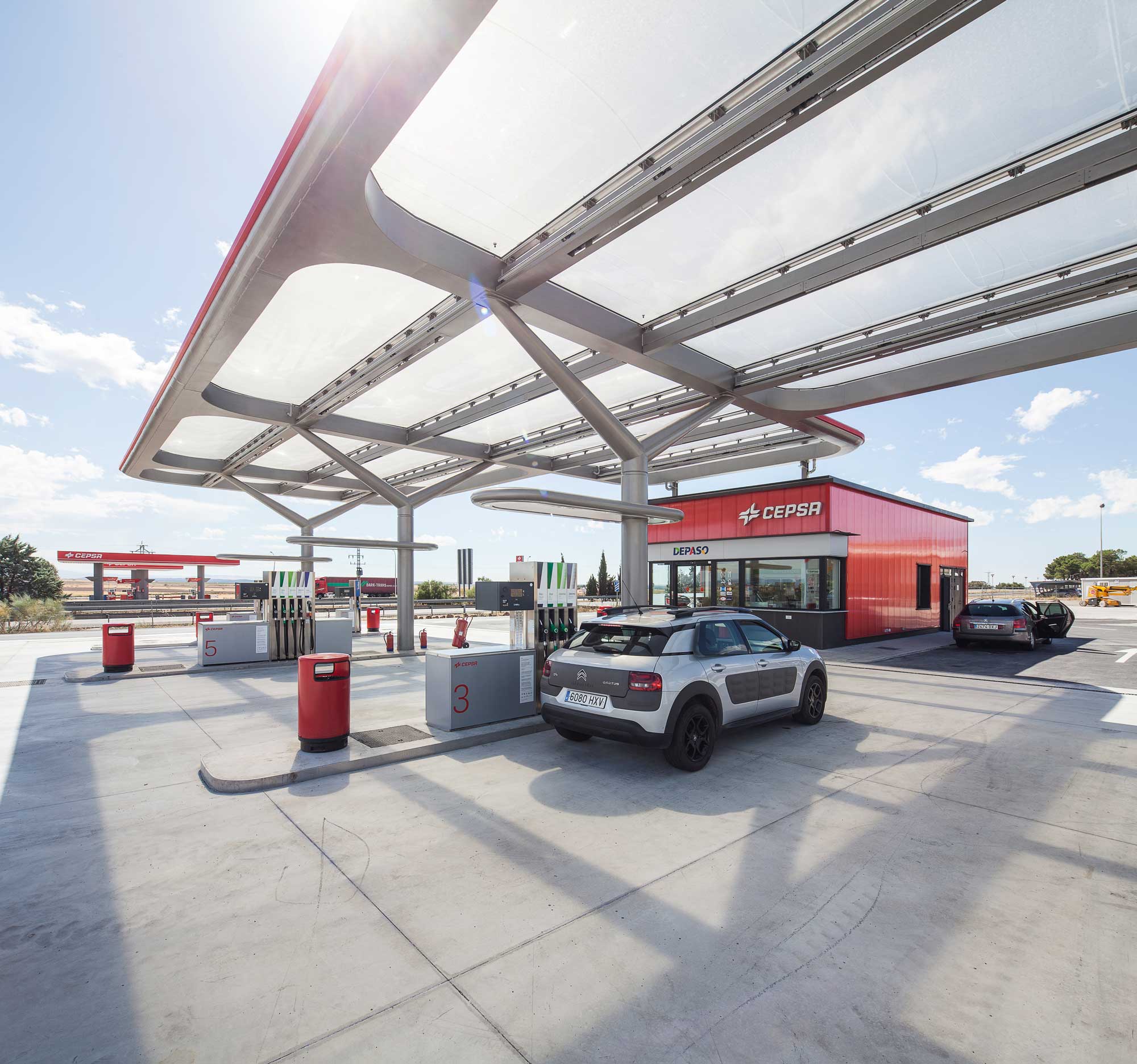
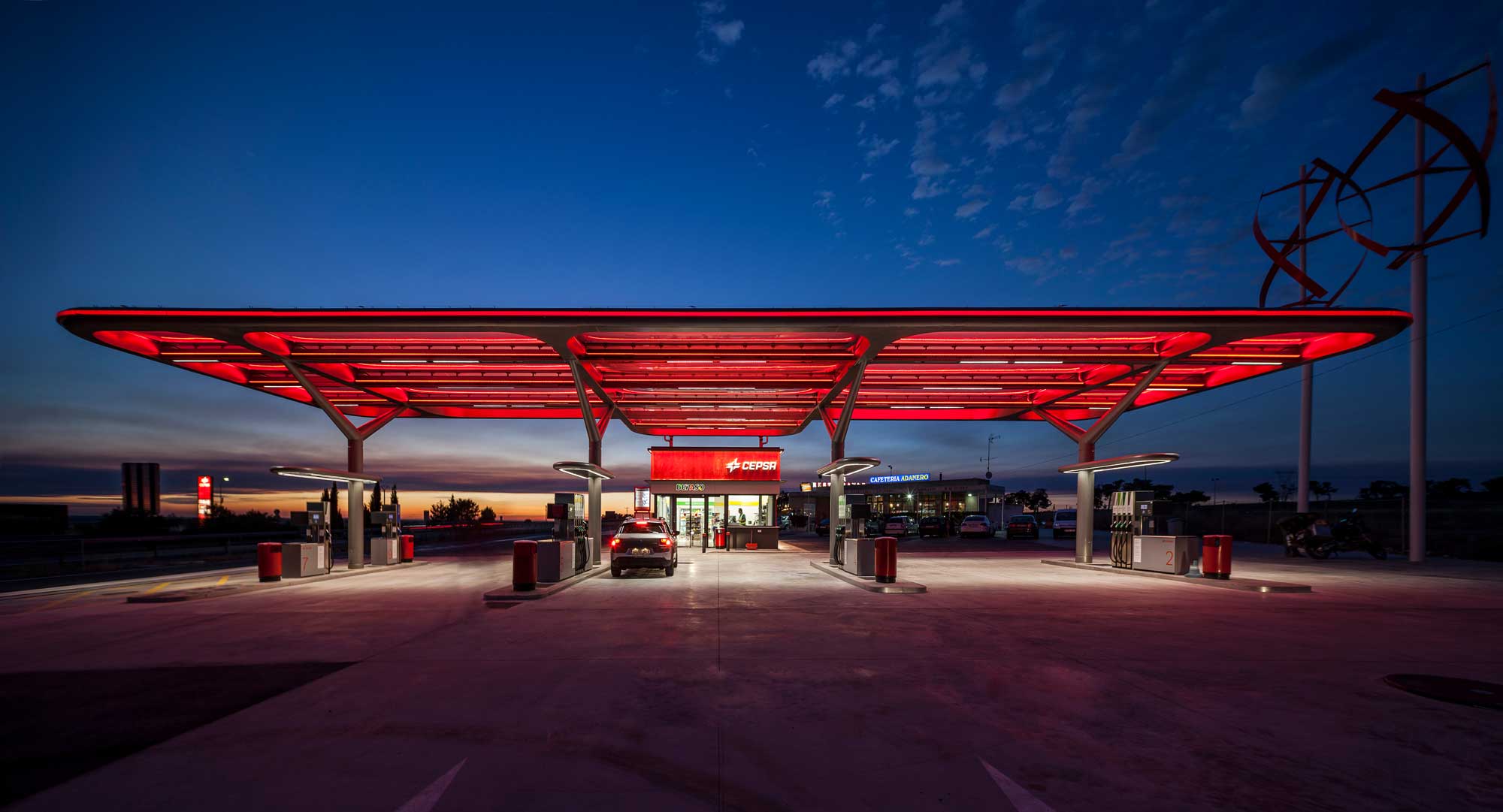
We’ve also worked for airlines, and in the airline industry, what’s really interesting is that, on the one hand, you have a digital approach, because the consumer has the whole online experience of bookings, etc, but on the other hand, there’s also the physical approach, because you spend a number of hours actually inside the plane. And, yes, you could say that most planes are actually very similar, but some airlines do actually spend considerable time thinking about the fact that the consumer’s physical experience in the aircraft can convey the message and ideas of the airline. Right down to the in-flight magazine.
So for us, the really interesting question is: how does the consumer get a sense that a Lufthansa plane is different from a British Airways plane? At the end of the day, they both fly Airbus 380s. Yes, from the outside they’re slightly different, because of their different brand logos. But when you walk in, what makes a British Airways plane different from a Lufthansa plane, or an Air France from a Cathay Pacific? The planes are the same, but it’s the experience that can be totally different. And that’s not just about the service, it’s also the seat you sit in, and the inflight magazine, and a number of other factors. It’s especially fascinating to work for the airline industry because of the challenge to create something which has to be uniquely special and distinctive in a very limited space, as well as in the digital world.
The boundaries between physical and virtual space are becoming more blurred than ever. Where do you see the future of designing spaces for companies and people?
At the end of the day, we have to provide what our clients ask for. And, these days, they’re asking for services that very much reflect this blurring of the physical and digital worlds. So that’s what we’re delivering. At Saffron, we started out in the physical world – admittedly, we’re not natively digital. We’re not a company that was born digital. I was born in 1961 and Wally was born in 1935, so neither of us grew up in the digital world. And a lot of our senior people didn’t either. Some did, of course, but essentially, our company was created in a non-digital world.
Now, of course, the company has evolved and is extremely fluent in the digital realm. And what we will continue doing is providing services that really leverage the power of technology, ranging from research tools, to using AI to interpret results and data analytics, to using architecture to provide a 3D interpretation of a vision. Saffron is becoming a fully integrated physical and digital hub.
Do you have any advice for Archipreneurs who are interested in starting their own company in the field of the built environment?
It really depends on the vision of the founder. If the vision of the founder is to produce work that he or she loves, at the risk of it being irrelevant to the clients, then they may end up with not a lot of work at all, and might face the risk of survival when the going gets tough.
When times get hard, people tend to cut down on what they consider superfluous expenses. These can often be seen as things like graphic design, or funding beautiful ads. If you’re starting an agency and you want to be successful, you need to have a certain degree of flexibility and a knack for forming partnerships, as well as someone in your team with the business acumen and skills to make things happen from a craft and design and practical standpoint, in a way that’s financially feasible.
The last thing you want to give up is your soul, your vision, the spirit that was with you when you started the business.
And there can be a fine line between being financially feasible and selling your soul. The big challenge, one I’ve faced a number of occasions, for example, during the financial crisis from 2008-2012, is: how do I keep my business alive, how do I keep my business feasible and at the same time keep my soul untouched?
This can be extremely difficult when the financial climate is tough and people don’t want to spend or invest as much as they might otherwise. It’s easy to fall into the trap of selling your soul in order to keep yourself financially afloat, and that’s the worst mistake you can make. The last thing you want to give up is your soul, your vision, the spirit that was with you when you started the business. But yes, of course, you can evolve. You can look back on 20, 30 years ago and say, “Oh, I was a romantic then. I’m less romantic now.”
There’s a saying, if you’re not socialist when you’re 20, you don’t have a heart, and if you’re not a capitalist when you’re 40, you don’t have a brain. It’s a bit like that. I think the real trick is to strive for a balance between ensuring the business is financially feasible, and not losing your soul. I think that would be my advice to anyone.
What are your thoughts on the future of cities and the built environment? How can it improve, and what continues to inspire you?
Well, at Saffron we’re very proud to have been working with the world’s most livable city, according to current economic research, for over a year now: Vienna. We’ve been working for the City of Vienna, helping them to rebrand and create a design system that offers a very consistent design experience at every little touch point a Vienna citizen or a visitor has with the city.
Cities, like nations, are very complex entities, and are shaped by a number of things. There’s an analogy between cities and websites. […] There are points of interest and landmarks in a city, just like on a website.
Cities, like nations, are very complex entities, and are shaped by a number of things. There’s an analogy between cities and websites. You have a navigation style in a city, just like you have on a website. This navigation, in a city, is marked by the road signs, similar to what you’d have to assist your navigation on a website. And the way the city has grown and the way the city has been planned, is like a website. There are points of interest and landmarks in a city, just like on a website.

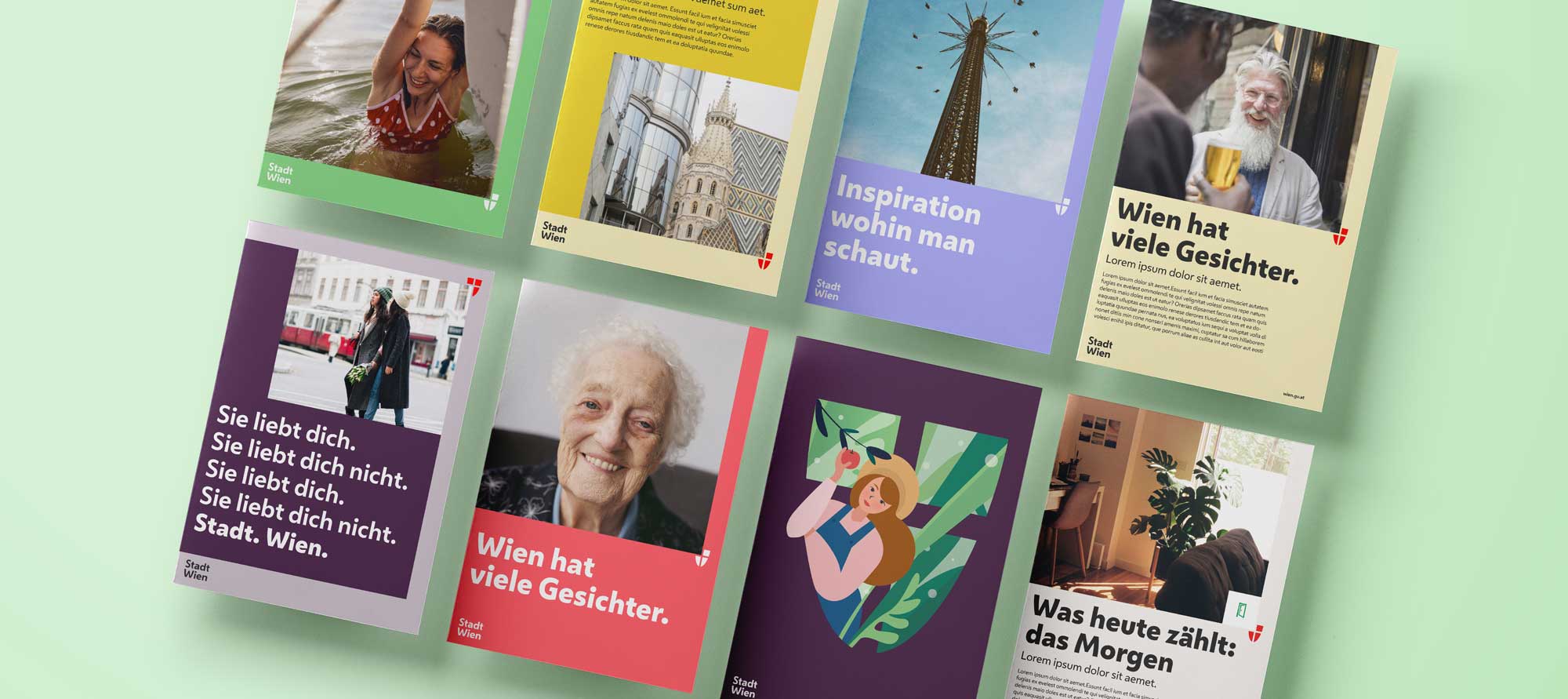
The challenges that cities face nowadays have to do with how to manage things like pollution, air quality, traffic, safety. The governing bodies of cities also have to place real importance on their public spaces, and who they commission to design them. So, as a governing body, when you call a competition for the design of the extension of a city, or for the design of parks, museums or public buildings, it’s very important that you make the right decisions with the right advisors, and find the right designers to do the work. That said, unfortunately, with many cities across the world, that hasn’t always been the case.
When it comes to making cities work better for its dwellers and visitors alike, there are such a huge number of variables to contend with, that are different in every place – the climate, the already existing infrastructure, the culture, the population density… the list goes on. And each of those variables present different challenges. But I see it as extremely important work: making the world an easier, better place to live, city by city. That’s what continues to inspire me.
About Jacob Benbunan
Jacob Benbunan is CEO of Saffron Brand Consultants, which he founded with Wally Olins in 2001. The company works under the principle that a brand should promote the promise of an experience delivered. Saffron believes in a holistic approach, taking into consideration every touch point a brand has with its audiences, both external and internal. Starting with two offices, in Madrid and London, Saffron later opened operations in Istanbul, Vienna and Mumbai and formed strategic alliances in New York, São Paolo, Dubai and Shanghai. Working with brands such as Vueling, Bankinter, EVO, Volotea or Yoigo in Spain, A1, Swiss Re, Akzo Nobel, Lloyd’s, C&A or the city of London, in Europe, Apollo in India, Banco Deuno, Baker & McKenzie and Mabe in the Americas has granted Saffron its reputation.
Prior to the founding of Saffron, Benbunan ran Wolff Olins Spain and was a member of its international Board of Directors from 1994 to 2001. During this period, he led projects for a variety of brands, including Orange, Repsol, Saint-Gobain and Credit Suisse. He also served as Strategic Services Senior Manager at KPMG Management Consultants. He is well known internationally as the author of many specialized articles, and is regularly invited to lecture at conferences and to participate on TV and radio shows.
Benbunan received his Bachelor of Science degree, cum laude, and a Master of Engineering from Boston University. He was the Chairman of Aebrand (Spanish Association of Branding) and member of the Executive Association of Spanish Agencies. Jacob is member of the Advisory Committee to the Communication Master of IE Business School, where he also lectures from time to time, among many other professional and academic activities.
Join our Newsletter
Get our best content on Architecture, Creative Strategies and Business. Delivered each week for free.

JOIN THE
ARCHIPRENEUR ACADEMY
- 9 Stage Studio Growth Roadmap
- Library of In-Depth Courses
- Checklists and Workbooks
- Quick Tips and Tutorials
- A Supportive Online Community







